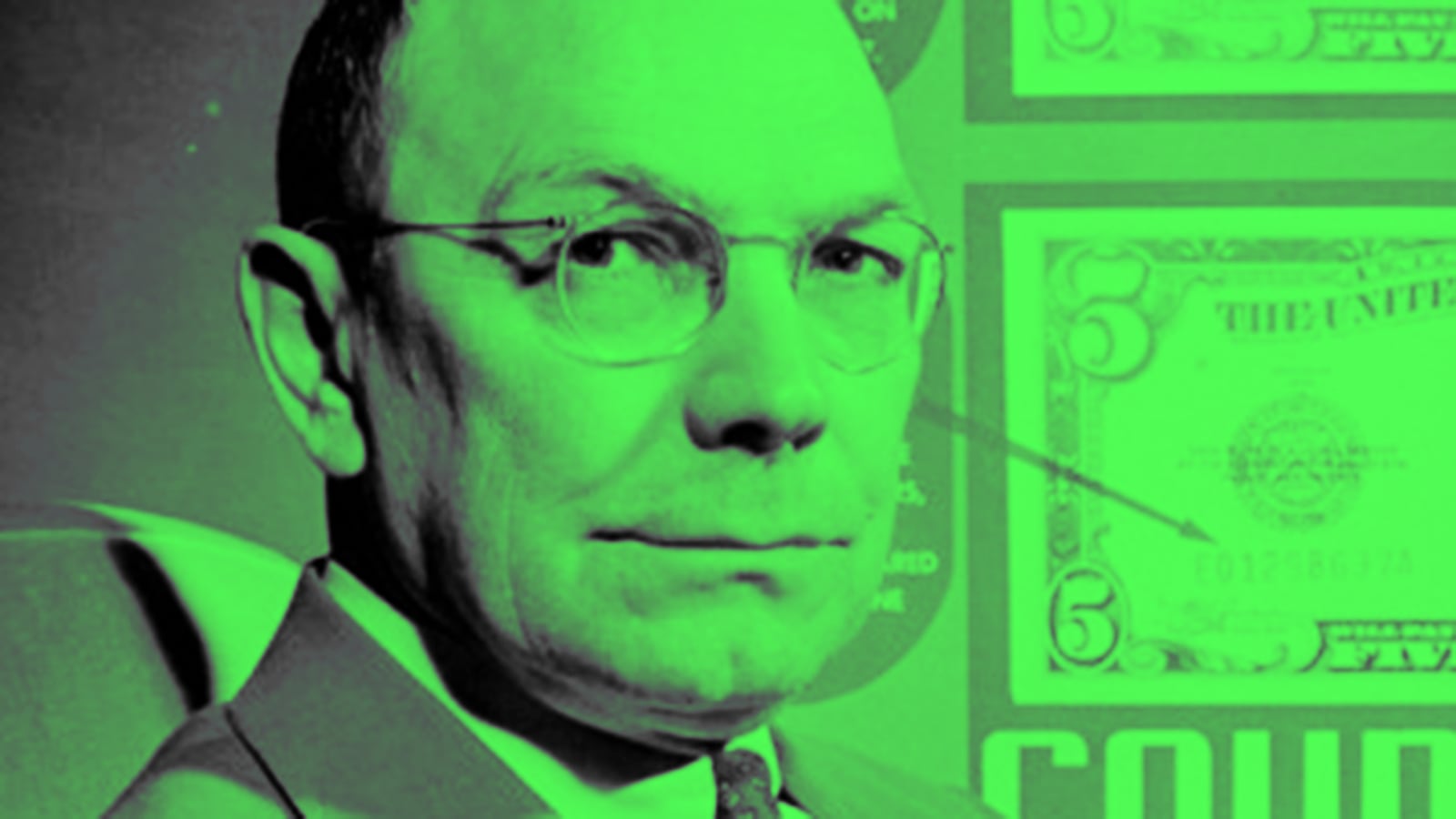Frank Wilson, the obsessive-compulsive, Type A, bean-counting mid-20th century crime fighter, may be the one person in history who made accounting sexy.
Crime may not pay. But when it did, Wilson, the world’s greatest forensic accountant, figured out how to follow the money to catch the Teflon gangster Al Capone, then the elusive kidnapper of Charles Lindbergh’s baby, Bruno Richard Hauptmann. Wilson’s story offers a cautionary tale for fraudmeister’s today, too: if you don’t pay your taxes, you may pay for your crimes. Tax prosecutors are rarely unprepared. The numbers don’t lie; the paper trail once reconstructed dooms cheaters.
Being a forensic accountant—tracking documents and deciphering numbers—may seem as compelling as watching trees grow. But Wilson had the drip-drip-drip patience to head a six-year Capone investigation that waded through more than two million documents. As a result, in his larger-than-life life, Wilson solved two seemingly unsolvable cases, improvising two now-standard crime-fighting techniques.
Having helped convict the seemingly un-convictable Al Capone for tax fraud not murder, Wilson then helped track the seemingly unfindable kidnapper Bruno Richard Hauptmann with another conceptual breakthrough. When the Lindberghs paid the ransom for their (already dead) baby in gold certificates, agents recorded the serial numbers. Many attribute that idea to Wilson, too, although some credit his boss, Elmer Lincoln Irey, chief of the Treasury Department’s Internal Revenue Bureau Enforcement Branch.
To appreciate Wilson’s accomplishment, we must remember how demoralizing Al Capone’s brazenness was in the ’20s. Gangsters exploited Americans’ collective crush on risk-takers and rule-breakers while stirring fears that government might not work. Strutting about Chicago, murdering, beating, bribing with impunity, Capone symbolized moral chaos and policy failure. Prohibition, the futile 18th Amendment in 1920 banning booze, launched an underground economy of bootlegging and speakeasies. The mass defiance of law and order was as undermining of authority as today’s lost drug war. And the policy boomerang was as infuriating for Puritans as it was for Donald Trump when his initial immigration ban prompted worldwide cheers for immigration.
Al Capone’s annual income often topped $60 million—in an America that often confuses wealth with virtue. Crimes like the St. Valentine’s Massacre—back when the murder of seven people still could scandalize—didn’t detract from his celebrity in an America that frequently confuses fame with significance. During the Roaring Twenties, newspapers boosted outsized personalities, competing to attract readers. As “Public Enemy No. 1,” Capone was popular—and conspicuous. Some claim that when a baseball crowd’s cheers for him drowned out cheers for President Herbert Hoover, the president ordered subordinates to get the mobster.
Capone, however, appeared untouchable. Too many local police were in his pocket. Too many witnesses to crimes were in the wind—or six feet under. And the lawman pursuing Capone, Eliot Ness, was better at building his own legend than catching the legendary lawbreaker. In fairness, Ness destroyed enough stills and speakeasies to slow Capone’s cash flow, weakening him considerably.
But this was not just the age of media, it was the information age. While Ness seemed more suited to cowboys and the frontier, Frank Wilson suited bureaucrats and the skyscraper.
Born in Buffalo in 1887, Wilson was methodical, mathematical. He would be the ant to Ness’s grasshopper; the nerd to Ness’s jock. Wilson even had bad eyesight, which earned him an honorable yet premature discharge from the Army during World War I. In 1919, he worked as an investigator for the Food and Drug Administration. He then served in the Department of Justice Fair Price Commission before joining the Internal Revenue Bureau’s one-hundred-person intelligence unit.
Led by Elmer Lincoln Irey, these T-men, Treasury men, would prosecute 15,000 tax evaders over 27 years, convicting 90 percent of them. Tax law was still in its infancy. A 1927 Supreme Court case, U.S. v. Sullivan empowered them. The Court declared that money earned illegally had to be reported.
This delightful contradiction, suited to our hyper-bureaucratic, over-taxed, big government era, made criminals vulnerable. Wilson started hunting for examples of Capone’s big spending to prove under-reporting.
Wilson’s eureka moment came at 1 a.m. one morning. Double-checking the back of a filing cabinet, he discovered three mislabeled ledgers seized years earlier. The ledgers tracked a lucrative gambling operation with profits going to “A,” “R,” “J.” Sometimes “Al” was mentioned. Perhaps the most famous entry in accounting history read "Frank $17,500 for Al.”
Handwriting analysis helped them locate a bookkeeper, Leslie Shumway, who worked at the Hawthorne smoke shop, a $200,000 a year front for Capone’s Hawthorne dog betting empire. Shumway explained the code. Using leverage to help co-conspirators dodge jail got another associate Fred Reis to testify to the money flow.
These nerds were supercool, not just supersmart—enduring near-misses of mob hits. “Wilson fears nothing that walks,” his boss Elmer Irey observed. “He will sit quietly looking at books eighteen hours a day, seven days a week, forever, if he wants to find something in those books.” He “sweats ice water,” a criminal interrogated by Wilson sighed.
Capone, getting nervous, issued at least one $25,000 contract on Wilson’s life. But Capone wasn’t the only one with spies. Wilson dispatched Michael Malone to pose as a Philadelphia thug, staying in the Lexington Hotel Capone mobsters frequented. Malone’s clothes came from Philly. Letters came from Philly—which Al’s men read. Gradually, they sought out Malone. As a result, one morning at 2 a.m. Malone called Wilson and his wife and told them to switch hotels, immediately. The hitmen would be waiting at the first hotel that morning.
The government indicted Capone in June 1931 on 23 counts of evading tax from 1924 to 1929. Only one hurdle remained: an insider warned Wilson that the mob had bribed or bullied jurors. At the last minute, the judge switched the jury. The untainted jury convicted Capone on three felony tax evasion counts and two misdemeanor failure-to-file counts. Capone served eight years and never recovered. Terrified tax delinquents across America rushed to file.
After the Lindbergh baby kidnapping case breakthrough, when Hauptmann was caught using gold certificates with recorded serial numbers, Wilson rose to become the head of the Secret Service. Focusing on prevention, he launched a public campaign centered around a booklet, Know Your Money. Within seven years, America’s annual losses from counterfeiting dropped 97 percent.
After serving from 1936 to 1947, Wilson lived in Washington, D.C. until 1970. Retired, he wrote up his colorful career as a Secret Agent. Characters based on him appeared in The Untouchables and other movies.
Alas, the grasshoppers proved more memorable. The names Eliot Ness and Al Capone evoke Chicago’s urban frontier in the ’20s. The name Frank J. Wilson is unknown, sounding as dramatic as an accountant’s ledger—er, most accountant’s ledgers.






